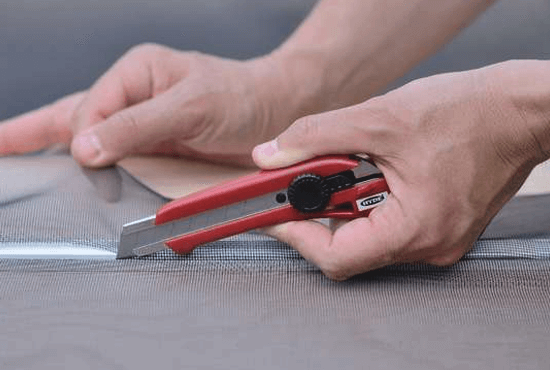Knives are like credit cards; don’t leave home without ’em and always carry several. ~ Richard Marcinko
Hobbies come aplenty. And if you’re a chef, crafter, or construction worker, there’s one thing all three of you have in common: You probably have a utility knife. While utility knives are used for general purposes—cutting, slicing, and opening boxes—some utility knives are aligned to specific tasks.
A utility knife is a cutting tool with a thin, sharp blade that can slice through a range of materials such as plastic, paper, foam, and cardboard. Utility knives come with a range of blade options—fixed, retractable, snap-off, smooth, serrated, folding, rounded tip, and pointed tip—and are compact.

Contents
Safety First
The blade of a utility knife is an important purchasing consideration because the cleaner the cut, the better and safer it is to use. A steel blade dulls quickly, so a better option is zirconium oxide, which lasts much longer than steel. For instance, these utility knives have ceramic blades that are more finger-friendly and durable. That is why the latter tends to last longer.
Ideally, the handle of a utility knife should be ergonomic to decrease the odds of the cutting utensil slipping out of your hands. Their handy size means they can be stored in easy-to-reach places—but away from children, of course. Cuts and lacerations are a major cause of injuries, but with the right knife and approach to safety, injuries are easily prevented.
Whether you are opening boxes, trimming vinyl flooring, repurposing recycled materials, cutting carpet, or slicing vegetables, a utility knife should be your go-to tool. And here are three simple life hacks that will make having this tool extra handy.
Simple Life Hack 1: Easily Remove Staples
Staples seem deceptively easy to remove from boxes, cardboard, or paper, even if you don’t have a staple remover. You just pick them out with your fingernails, right? Stop! If you do manage to remove a staple this way, there’s the danger of it flicking into your eye—or someone else’s. It is also highly likely that you will break a nail or cut yourself on the edge of the staple, possibly leading to an infection.
There’s a safer, easier, and quicker way—and it involves a utility knife, especially one that has a blade with a hook. You simply place the hook under the staple and ease the staple out. If you don’t have a knife with a hook, place the tip of the blade under each of the arms at the back of the staple and ease each one up. Then wiggle the staple out from the front, and leverage the staple out of its lodging. This hack works just as well for paper staples as it does for large staples used for construction and industrial purposes.
Life Hack 2: A First Aid Kit Essential
A utility knife wouldn’t necessarily be the first item you’d think of to add your first aid kit. However, it makes sense, especially if you have a portable first aid kit for outdoor activities like hiking and camping. A utility knife can be used to quickly remove bee stings—you have to flick out the sting or the poison will spread, possibly causing an allergic reaction—so use the tip of your utility knife, and sanitize it after you’ve used it.
A utility knife can be used to cut dressings and bandages to an appropriate length if you or a friend have an accident that involves a cut or graze, and you need to cover or dress the wound. If you suffer from a sprain or suspected fracture, you can use your utility knife to cut small branches from trees to keep the limb immobilized.
Simple Life Hack 3: Get Your Craft On
Looking for a unique pot plant idea? Have a few old books lying around? Then you can create a unique pot plant holder with glue, a book, a re-zippable bag, and your utility knife. It’s as simple as gluing the pages of your book together, waiting for it to dry, and cutting out a box from inside the book that will fit your plant—succulents work well. Line the space with the zip lock bag and transfer your plant.

Because the blade is thin, sharp, and precise, woodcarving is another craft you can enjoy with a utility knife. Choose wood that is soft, like pine, and keep your blade sharp to ensure the process of carving is smooth and safe. Start with a simple pattern, like a leaf, bird, or flower—or letters like in the video below—transfer it onto the wood and get carving!
More on LivingProofMag
How to Clean Grout Stains in the Bathroom or Kitchen
How to Unclog a Double Kitchen Sink with Standing Water
How to Prevent Water Spots on Stainless Steel Sink?
If you thought your utility knife was just to break open a few boxes, now you know some other ways to make the most of your cutting supplies. While these three hacks will help you in the office, outdoor activities and the world of crafts, this is just a few of many. Here’s hoping your utility knife becomes so fun to use that you never leave the home without it.
